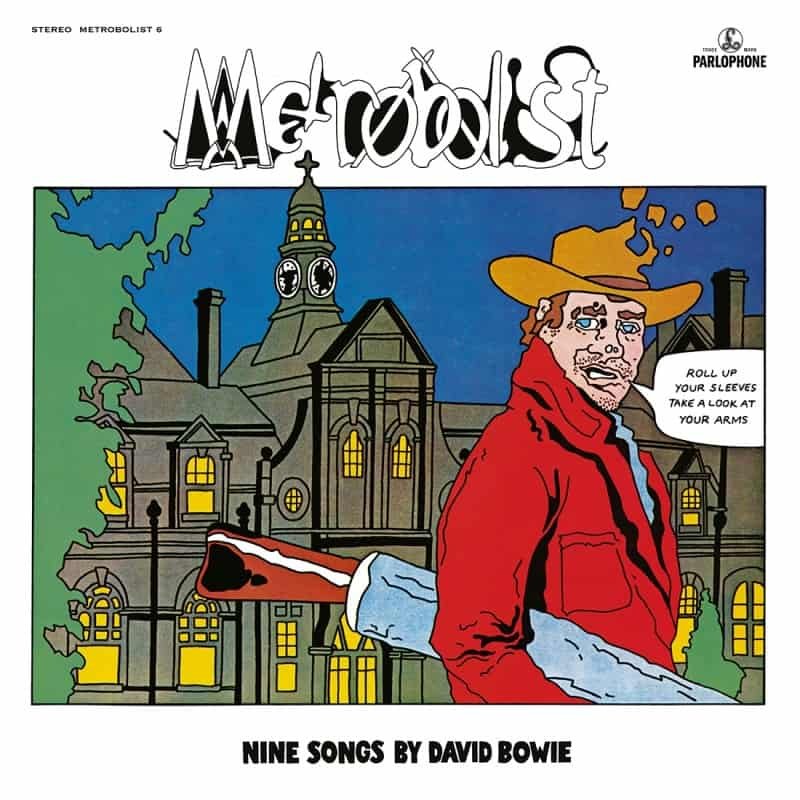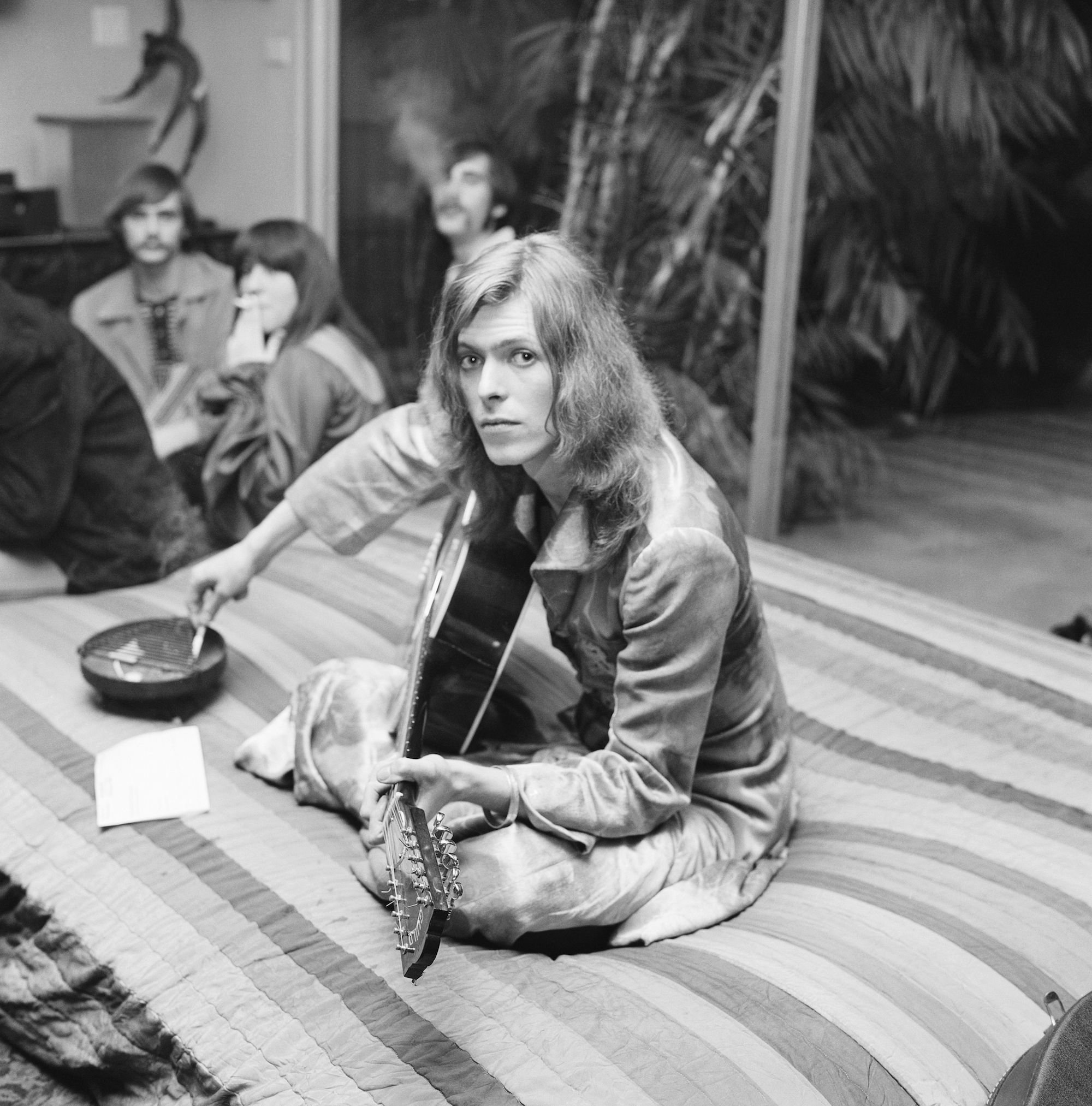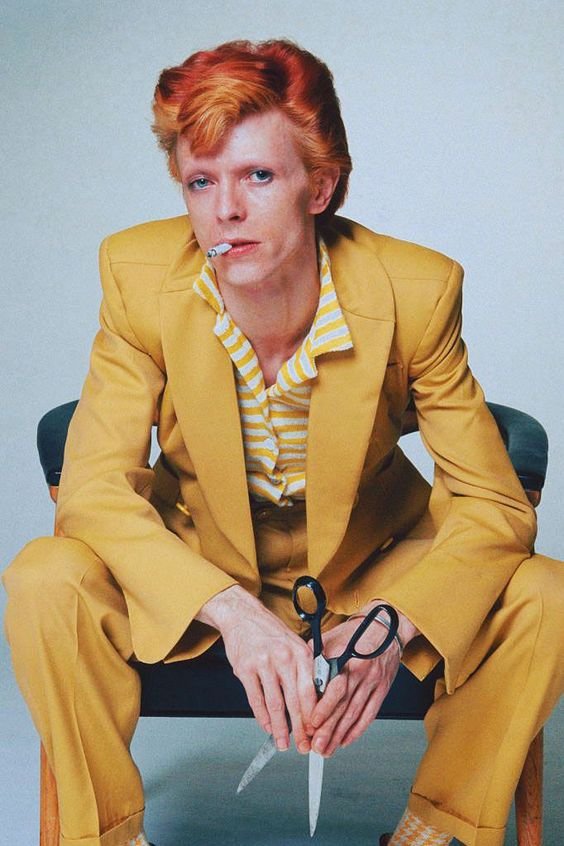David Bowie's Love Affair with Fashion
“In order to look special wearing the chancy unique; it must be worn with your persona, and if the two don't blend, then the look becomes pear-shaped.”
“Ironically, style doesn't come even closely related to fashion. It's got nothing to do [with clothes].”
Bowie
If ever a man courted fashion, it was David Bowie.
In an unapologetically charismatic style, he made room for those who chose to be fluid and commanding with their identity. Society depends upon these icons to prevent fashion from becoming stagnant and defined. Fluidity allows fashion to evolve.
Harnessing the power of visual culture, Bowie was able to convey a multitude of messages to the masses. Notably, his final studio album, “Blackstar,” was missing something his fans had become accustomed to: the singer’s image on the cover. This led many to see it as symbolic of Bowie’s exit from the spotlight. It very much was, with his exit from Earth occurring just two days later.
Once one realizes that fashion is Bowie’s form of communication, it becomes a cheat sheet for analyzing his impact on society and culture.
Despite Bowie’s ability to create masterpieces in all walks of life, it was his collaboration with Japanese designer, Kansai Yamamoto that birthed some of his most iconic looks. It was this merging of minds which was responsible for much of the way in which we perceive, visualize and immortalize Bowie’s image. After all, is it not the impressive unitards of the Ziggy Stardust era which are forever embedded into our minds?
Bowie’s creation of multiple stage personas highlights the way in which taking on roles can be an effective tool for allowing an easy alternation between different energies, messages, and identities. His awareness of how to effectively communicate to audiences paved the way for his success and ability to resonate with all. Naturally then, an examination of some of his best looks is called for.
Bowie as Ziggy Stardust. Bodysuit designed by Freddie Burretti.
Very much a collision of fashion and art, Bowie always strove to highlight the importance of style being an extension of oneself. He had many influences. From spirituality, psychedelics, religion, gender, space, and politics, to power and love. Bowie’s fascination with science fiction and “otherworldliness,” was very much a “sign of the times. ‘Space Oddity’ was recorded on June 20, 1969, exactly one month before the Apollo 11 moon landing.” Society and culture were simultaneously intrigued by the universe, this, in turn, had to be reflected in fashion.
When one thinks of Bowie’s presence and the legacy he left, his unique energy is impossible to forget. It has captivated many of his fans, including those in the industry. “Nina Simone, whom he befriended in the early ’70s, admiringly deemed him ‘not human.’ ‘David ain’t from here,’ she said.”
Bowie’s impact on fashion and beauty is something, almost unintentional. The ripples he created were due to him utterly, and simply, being himself. In his own words, “I never really had much of an interest in fashion.” Something almost satirical, but a testament to his effortless magnificence.
“As an adolescent, I was painfully shy, withdrawn. I didn’t really have the nerve to sing my songs on stage and nobody else was doing them. I decided to do them in disguise so that I didn’t have to actually go through the humiliation of going on stage and being myself. I continued designing characters with their own complete personalities and environments. I put them into interviews with me! Rather than be me — which must be incredibly boring to anyone — I’d take Ziggy in, or Aladdin Sane or The Thin White Duke. It was a very strange thing to do.” -Bowie
This proves to be a somewhat endearing insight into the way in which Bowie processed the world and the way in which he weaponized his personas as a means of tackling his insecurities.
Is there a much more human truth? Fashion and or expression as armor.
Bowie held the ability to utterly shapeshift genders and energies in a fluid and fearless way, relaxed and secure within his identity. This will forever mark him as one of the most influential faces for the representation of gender fluidity. It is fitting then, that he was an individual formed from individuality. Bowie’s intrinsic way of wearing clothes with his persona is a thread that connects all of his looks. This is especially apparent when Bowie would wear more feminine styles. His charisma was always articulated, his presence always commanding. His persona, an accessory.
His studio album The Man Who Sold The World, featured him reclining on a chaise longue in a “man dress.”
Originally, a cartoon was selected for the album cover. However, a piece designed by Michael Fish was expectedly nothing short of extravagant, chic, and charismatic. “Fish was one of Swinging London’s leading trendsetters and the inventor of the kidnapper tie. Bowie went on to wear the dress for interviews.


This underlined his early fascination with androgyny, a theme echoed on the cover of his next album, Hunky Dory, where Bowie was pictured channeling Marlene Dietrich – another influence that stayed with him in various forms throughout his career.”
Once Bowie met an individual who embodied the same enigmatic energy and presence as himself, his supposed “match,” an iconic fashion duo was born. Supermodel Iman Abdulmajid complemented Bowie’s energy, their personas and style forever marking them as one of the most influential and timeless celebrity couples. Their marriage was adorned with a multitude of infamous looks, pieces that continue to feed society's quest for the authentic, untouched, and effortless fashion, the true “vintage” aesthetic.
David Bowie and Iman at Spago, Beverly Hills.




